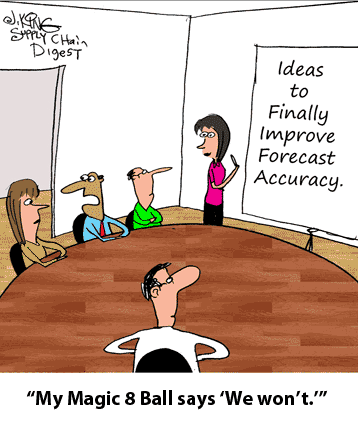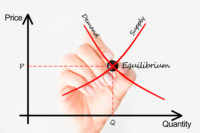Looking for a quick scope on the latest supply chain news, trends and tips? Look no further, here’s your Monday supply chain briefing from Arkieva. Don’t forget to follow #SupplyChainScope on Twitter and Facebook for updates.
Supply Chain News
The Robots Are Coming! What Kind of Jobs Can be Automated?
We all know the robots are coming, with a growing concern about the impact on the jobs market across the globe.
Robots overall generally means quite a broad swath of technologies, from machines that automate manufacturing to software that replaces the need for humans to perform tasks or make decisions.
The smart folks over at McKinsey recently took a very deep dive look at what that impact on jobs could be, estimating the amount of time spent at given types of tasks that could be automated with current technologies, as shown in the graphic below. It does this overall and then by specific industry sectors.
So, for example, McKinsey estimates that 78% of all predictable physical work in the US could be done with current robotic technologies, and 48% of that physical work specifically in the accommodations and food service sector could be automated. We’re surprised there are more robotic sweepers already in use.
Source: Supply Chain Digest
New Reports Show an uptick in Consumer Sales in The First Half of the Year
New reports point to potential growth in the goods-moving economy in the coming months. A healthy gain in retail sales and a pickup in industrial production last month suggest that overall growth rebounded solidly in the spring after a winter lull, the WSJ’s Ben Leubsdorf reports. Those are critical sectors for a shipping and logistics world that so far has seen sagging volumes at ports at truck terminals as retailers and manufacturers have worked off high inventory levels. The 0.6% growth in consumer sales from May to June was led by the largest one-month jump in sales at building-supply stores in more than six years and left overall second-quarter sales up 3.1% in the first half of the year. Any new inventory replenishment is likely to follow changing patterns in the consumer economy: sales at so-called nonstore retailers, largely online sellers, rose 10.6% in the first half of 2016 from a year ago, while department-stores sales fell 3.8%.
Source: The Wall Street Journal
Trending: A Guide to Supply Chain Management: Making Intuition More Valuable
Supply Chain Strategy
The Big Data Problem in Supply Chain: When is it an Overload?
How much is too much? That’s the question many supply chain practitioners are asking themselves in this world of big data, where a flood of new information is rapidly becoming readily available. It’s now possible to have more details than ever about your suppliers, customers, and even your own operations.
But there’s this concept of data paralysis—where you have so much data you don’t know what to do with it all—and it could actually be crippling your supply chain. If you don’t have the right tools in place, you could fall victim to this phenomenon.
When trying to determine if you’re suffering from information overload, here are a few things to consider:
Are you focused on quantity or quality?
Source: 21st Century Supply Chain Blog
Beyond the Supply Chain Maturity Model Buzz
Supply Chain Maturity Model: Journey, Agents of Change, Real Optimization, & Community Intelligence
What is the Supply Chain “Maturity Model” Buzz?
Aside from the terms big data and analytics, the most common buzz word in supply chain solutions is “Maturity Model”. As a 40+ year veteran of campaigns to bring better analytics to bear on key organizational decisions, my immediate reaction was: another buzz word with more hype than substance glossing over or ignoring a rich set of outstanding prior and current work that can be an inconvenient truth. Words of wisdom such as – how can we move forward, if we don’t know where we are going – seem obvious and a dangerous simplification! Yet, there is some excellent work under this banner – one is the INFORMS analytics maturity model with its simple goal of helping organizations do an honest self-assessment that reveals how well they are using the new techniques of analytics.
Source: Arkieva Blog
Read Also: Do You Have a Bimodal Supply Chain?
Supply Chain Wit:
I bet they are not using the Arkieva demand planner

Image source: Supply Chain Digest



